5 min read
How Quizlet Used Braze to Optimize Their Data Collection
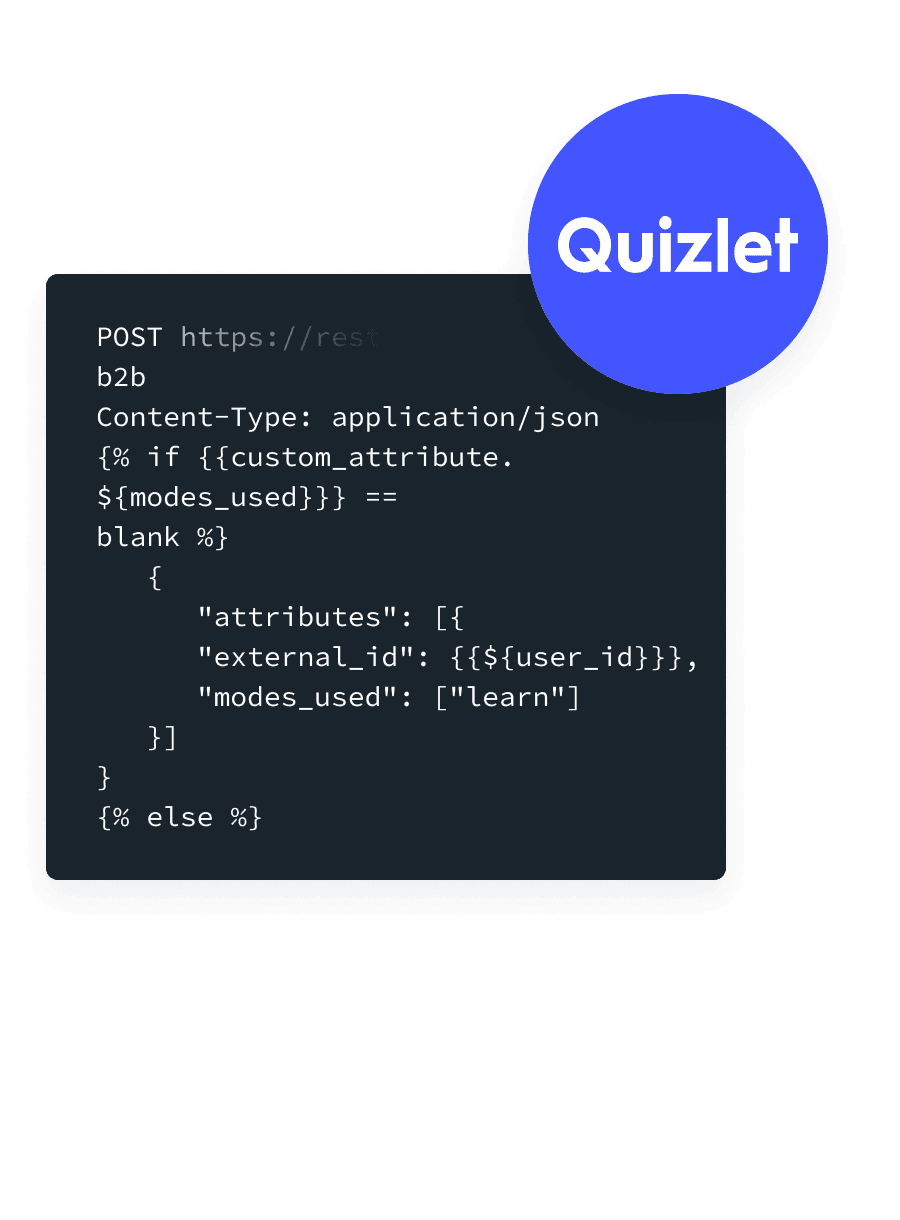
Quizlet wanted to drive users to check out a wider range of different studying modes. However, they were unable to efficiently gather the necessary information without collecting unnecessary data.
Quizlet utilized the Braze platform to create webhooks in connection with each study mode in order to collect more nuanced data on which mode a customer was using.
By implementing webhooks to collect this data, Quizlet was able to decrease related network requests by 76.4% and execute their campaign without compromising their data hygiene.
INDUSTRY
BY THE METRICS
76%
Decrease in Data Collection-Related Network Requests
Thoughtful brands make a point of putting customer experience at the forefront of their marketing strategy—after all, many customers believe that their experience with your app or site is as important as the actual product or service you provide. When online study platform Quizlet began planning a campaign that required a more efficient way for them to collect customer data, they made sure that those potential complications didn’t get in the way of serving up a better customer experience. Instead, they used Braze to break down siloed workflows and establish a new approach to data collection to make more relevant messaging possible.
Optimizing Data Collection For Feature Suggestion
Created for students, Quizlet enables studiers to review information through flashcards, tests, and games. By providing various forms of interactive studying tools and games, Quizlet actively stands by their mission of helping both students and teachers practice and master the topics they are reviewing. To further aid in the studies of its users, Quizlet currently offers five study modes and two studying games for its customers to choose from, including:
- Learn: In this mode, Quizlet creates a personalized study plan based on student familiarity with their study set
- Flashcards: This mode provides digital flashcards to help students quiz themselves on terms, definitions, and answers
- Spell: In this mode, Quizlet uses text-to-speech audio to read terms/definitions and asks students to write what they hear
- Write: This mode allows students to type out written answers and then review wrong answers in a follow-up study session
- Test: In this mode, Quizlet mimics a real in-class assessment to help students assess how they would perform if asked to take a quiz or test on a given subject
To help users find the right modes and games for their specific needs, Quizlet focused on nudging customers to check out different studying modes and games that they weren’t already utilizing.
Effective Data Management Takes Successful Cross-Team Collaboration
In modern customer engagement, it can be tempting to track every piece of customer data possible—but that’s a temptation brands should resist. Collecting customer data that isn’t essential for your customer efforts burns engineering resources, drives up costs, and makes it harder for marketers to sort through the information at their disposal to take effective action.
When collecting the kinds of highly nuanced engagement data needed to accurately target its campaigns, Quizlet ran into two main issues: Accuracy and data usage. They wanted to retain the full-spectrum of historical data for every user’s mode usage and efficiently collect new information, but struggled to ensure data accuracy without collecting far more data than they needed.
Quizlet’s engineering and product teams first tackled this issue. One proposed solution was to run queries on the modes being used by each customer. However, because only the last 100 modes came up in the query, this method didn’t accurately represent historical data for individuals who consistently used one mode or game in their recent study habits. Another proposed solution was to set up a boolean custom attribute based on if a person used a specific study mode or not (e.g. Customer X has/has not used Quizlet’s “Learn” mode). But because Braze would be pinged every single time a mode was used by any customer, even if they had already used that mode, this approach was rejected because it would lead Quizlet to collect far more data than needed for the campaign.
The engineering team at Quizlet took an agile, collaborative approach when determining their next steps, turning to their marketing team for further help on optimizing data collection. By bouncing ideas off of each other, Quizlet landed on using webhooks to effectively address their data issue.
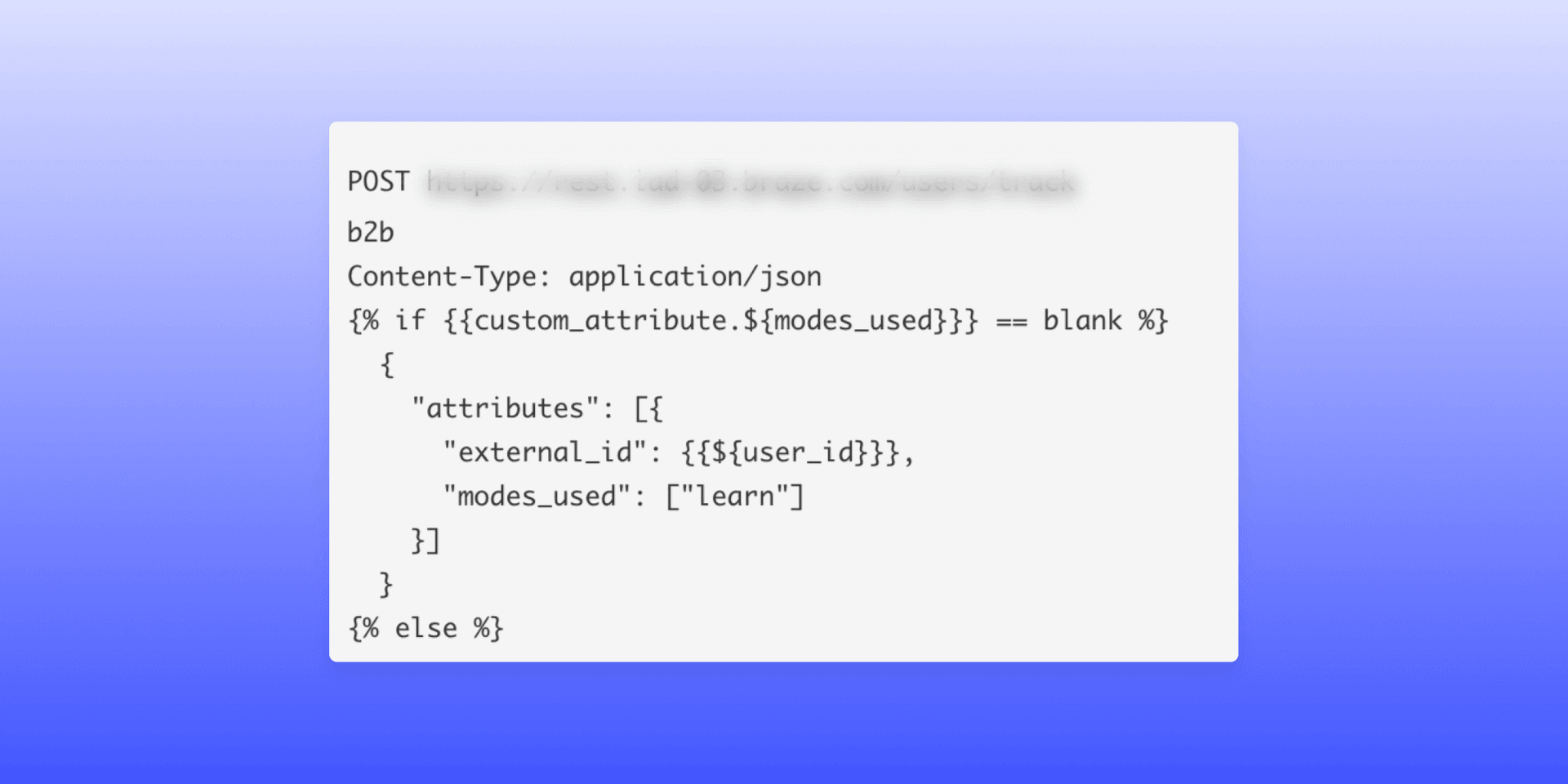
Webhooks: An Efficient Means of Collecting Data
A webhook is a communication from one application to another, where a predetermined event that takes place in one system sets off a notification for an event to occur in the other. For Quizlet, the predetermined event was the selection of a study mode by a given customer and the event that occurred following this ping was the recording of what mode that customer had used.
Every time a Quizlet user selected a study mode in the app or on the web (logged in state only), that event was collected by the Braze SDK and sent to Braze via a Rest API. That event triggered an Action-Based Campaign, which in turn sent a webhook with a JSON object personalized via Liquid to the Braze Rest API users/track endpoint if the following criteria was met. Each of the seven study modes were set up with their own webhook and re-eligibility was disallowed to ensure that new data points were not being created for a person who used the same mode more than once- each user profile would use up to seven data points to represent the seven possible study modes they could be using.
A Successful Decrease in Data Usage
When Quizlet attempted to collect data by running queries, not only was historical accuracy an issue but so was the amount of data being collected by this method. Approximately 1.5 billion network requests would have been made per year with this method. In comparison, an estimated 354 million network requests will be made with the webhook method, a 76.4% decrease.
By minimizing the amount of data needed, Quizlet was able to successfully execute its customer-first efforts to expand user awareness around different study modes in more personalized, relevant ways without collecting unnecessary data or compromising their data hygiene.
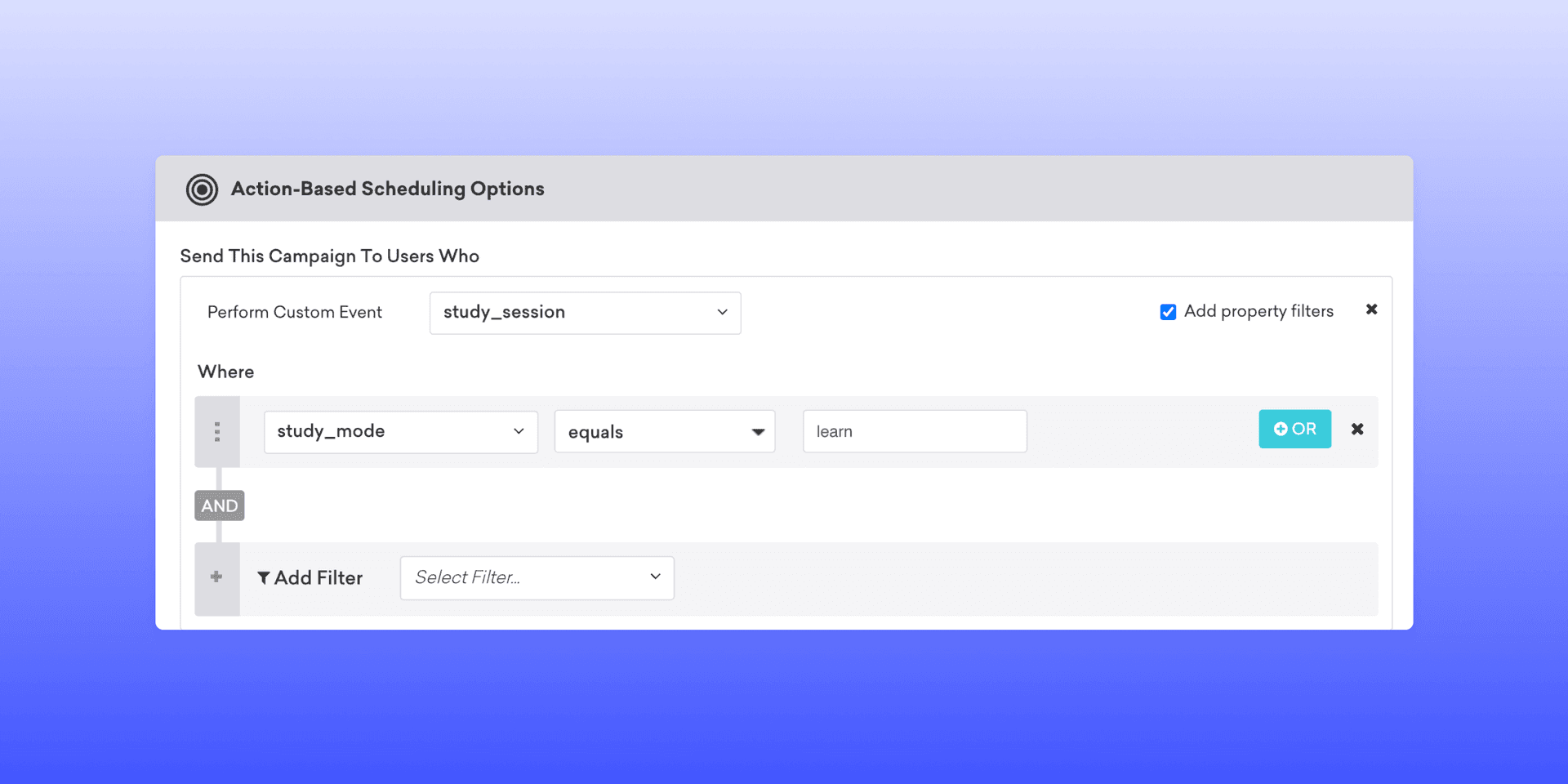
Key Takeaways
Brilliant marketing campaigns rely on targeting customers and understanding customer behavior—something made possible by smart data collection and management. But handling large amounts of data can be time-consuming and can lead to inefficiency.
Long-term success is built on smart decision-making when it comes to the ways in which your brand collects, stores, and leverages customer data. To learn more about the ins and outs of what is the right data to collect, read our Data Collection Strategy feature.
FEATURED TOPICS
INDUSTRY
Media & EntertainmentCheck out more Case Studies
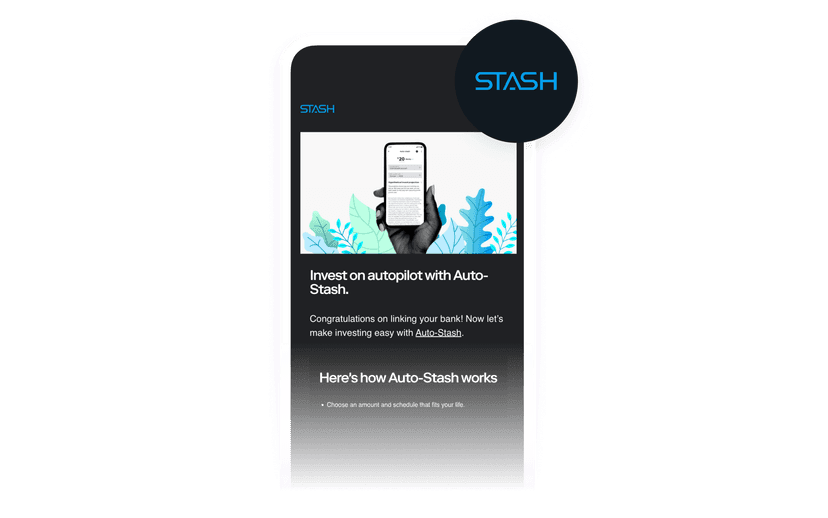 Case Study5 min read
Case Study5 min readStash drives long-term investing habits with sophisticated, personalized user onboarding
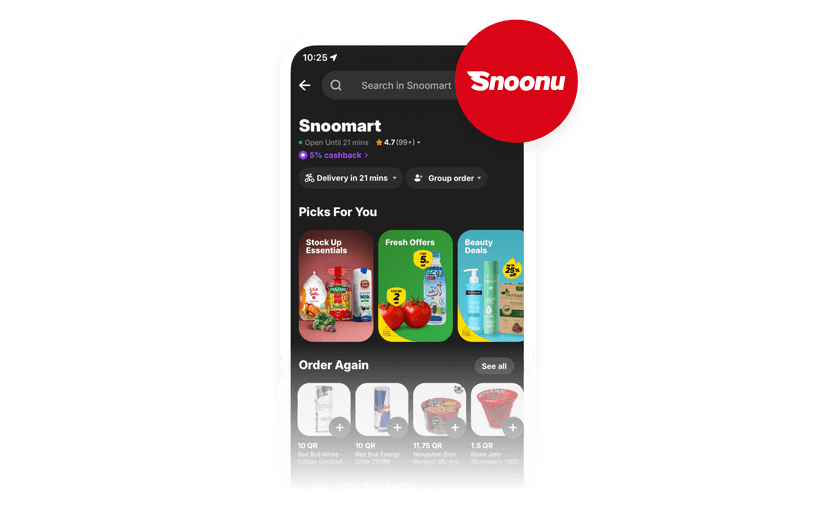 Case Study3 min read
Case Study3 min readSnoonu drives customer loyalty and repeat orders through a gamified shopping experience
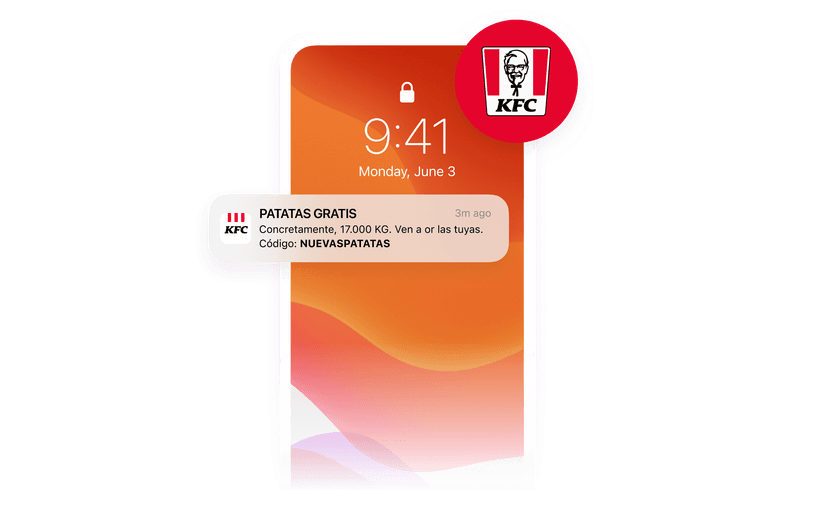 Case Study4 min read
Case Study4 min readKFC Spain's bold customer engagement strategy turned critics into fans